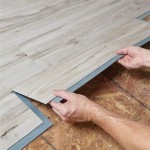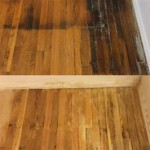Difference Between Hardwood and Laminate Flooring
Selecting the right flooring for a home or commercial space involves considering several factors, including aesthetics, durability, cost, and maintenance. Two of the most popular options are hardwood and laminate flooring. While both can offer appealing visuals and functional surfaces, they possess distinct characteristics that make them suitable for different applications. Understanding the fundamental differences between hardwood and laminate is crucial for making an informed decision that aligns with specific needs and preferences.
This article explores the key distinctions between hardwood and laminate flooring, covering aspects such as their composition, appearance, durability, cost, installation, and maintenance requirements. By examining these differences in detail, property owners and designers can better assess which material is the most appropriate choice for their projects.
Composition and Manufacturing
The primary difference between hardwood and laminate flooring lies in their composition and manufacturing processes. Hardwood flooring, as the name suggests, is derived directly from solid wood. It is typically sawn from a single piece of timber, such as oak, maple, cherry, or walnut. The species of wood selected influences the color, grain pattern, and hardness of the flooring. Hardwood flooring is available in various thicknesses and widths, allowing for diverse design options.
Laminate flooring, on the other hand, is a composite material constructed from multiple layers bonded together. Typically, these layers include:
- Wear Layer: A transparent, protective top layer that resists scratches, stains, and fading. This layer is crucial for the overall durability of the laminate flooring.
- Decorative Layer: A high-resolution photographic image that replicates the appearance of wood, stone, or other materials. This layer provides the aesthetic appeal of the flooring.
- Core Board: A dense fiberboard core, typically made of high-density fiberboard (HDF) or medium-density fiberboard (MDF). This core provides the structural stability and impact resistance of the laminate flooring.
- Backing Layer: A bottom layer that provides stability and moisture resistance, preventing warping and cupping.
These layers are fused together under high pressure and heat, creating a durable and dimensionally stable flooring product. The photographic image in the decorative layer allows laminate flooring to mimic the look of various wood species and other materials, often at a lower cost than the real thing.
Appearance and Aesthetics
While laminate flooring can effectively imitate the appearance of hardwood, there are subtle differences in aesthetics that are often noticeable upon closer inspection. Hardwood flooring showcases the natural variations in grain patterns, knots, and color tones inherent in the wood itself. These natural characteristics contribute to the unique and organic look of hardwood floors, adding warmth and character to a space. Over time, hardwood flooring can develop a patina that further enhances its visual appeal.
Laminate flooring, due to its photographic layer, offers a consistent and uniform appearance. While advancements in printing technology have improved the realism of laminate flooring, it lacks the subtle variations and imperfections found in natural wood. The repeating patterns in the photographic image can sometimes be discernible, particularly in less expensive laminate products. However, high-quality laminate flooring can convincingly replicate the look of hardwood, especially from a distance.
Another aesthetic consideration is the edge profile of the flooring planks. Hardwood flooring can be installed with square edges, beveled edges, or micro-beveled edges, depending on the desired look. Laminate flooring typically features either square edges or beveled edges. The edge profile can influence the overall appearance and feel of the flooring, with beveled edges often creating a more defined plank look.
Durability and Resistance
The durability and resistance to wear and tear are significant factors to consider when choosing between hardwood and laminate flooring. Hardwood flooring's durability depends on the species of wood and the finish applied. Harder wood species, such as oak, maple, and hickory, are more resistant to dents and scratches than softer wood species, such as pine or cherry. The finish also plays a crucial role in protecting the wood from damage. Polyurethane finishes are commonly used for hardwood floors, providing a durable and water-resistant surface. However, even with a protective finish, hardwood flooring is susceptible to scratches, dents, and water damage if not properly maintained.
Laminate flooring's durability is primarily determined by the thickness of the wear layer and the density of the core board. The wear layer, typically rated in AC (Abrasion Class) ratings, indicates the flooring's resistance to abrasion, impact, and staining. Higher AC ratings signify greater durability. Laminate flooring is generally more resistant to scratches, stains, and fading than hardwood flooring, making it a suitable choice for high-traffic areas and households with pets or children. The core board provides impact resistance, but excessive force can still cause dents or damage. Laminate flooring is also more resistant to water damage than hardwood, although it is not entirely waterproof.
In summary, laminate flooring generally offers better scratch and stain resistance, while hardwood flooring's durability is dependent on the species and finish. Both materials can be damaged by excessive moisture, but laminate is typically more tolerant of spills and humidity.
Cost Considerations
The cost of hardwood and laminate flooring can vary significantly depending on the quality, brand, and installation requirements. Generally, laminate flooring is less expensive than hardwood flooring. The lower cost of laminate is due to its manufactured nature and the use of less expensive materials. The price of laminate flooring can range from a few dollars per square foot for basic options to several dollars per square foot for high-end products with thicker wear layers and realistic wood grain patterns.
Hardwood flooring, being a natural material, tends to be more expensive. The price of hardwood flooring depends on the species of wood, the grade, and the width and thickness of the planks. Common hardwood species like oak and maple are generally more affordable than exotic species or rare grades. The cost of hardwood flooring can range from several dollars per square foot for unfinished planks to significantly more for pre-finished, premium-grade options.
Installation costs can also vary between hardwood and laminate flooring. Laminate flooring is often designed for easy installation using click-lock systems, which can reduce labor costs. Hardwood flooring may require more specialized installation techniques, especially for solid hardwood, which can add to the overall cost. Refinishing hardwood floors, while an additional expense, can extend their lifespan and restore their appearance.
Installation Process
The installation process differs significantly between hardwood and laminate flooring. Laminate flooring is typically installed as a floating floor, meaning it is not directly attached to the subfloor. The planks are connected to each other using a click-lock mechanism, creating a continuous surface that rests on an underlayment. The underlayment provides cushioning, sound insulation, and moisture protection. Laminate flooring can be installed over most existing subfloors, as long as they are level and clean. The floating installation method makes laminate flooring relatively easy to install, even for DIY enthusiasts.
Hardwood flooring can be installed in several ways, depending on the type of hardwood and the subfloor. Solid hardwood flooring is typically nailed or stapled directly to a wooden subfloor. Engineered hardwood flooring, which consists of a thin layer of hardwood veneer bonded to a plywood or MDF core, can be installed using nails, staples, glue, or a floating method similar to laminate flooring. The installation of hardwood flooring requires more precision and skill than laminate flooring, as improper installation can lead to squeaking, warping, or gapping.
Proper subfloor preparation is crucial for both hardwood and laminate flooring. The subfloor must be level, clean, and dry to ensure a successful installation. Uneven subfloors can cause problems with both types of flooring, leading to premature wear and tear.
Maintenance and Cleaning
The maintenance requirements for hardwood and laminate flooring also differ. Hardwood flooring requires regular sweeping or vacuuming to remove dirt and debris. Damp mopping with a wood floor cleaner is recommended for removing spills and stains. However, excessive moisture should be avoided, as it can damage the wood and cause warping or cupping. Hardwood floors may require periodic refinishing to restore the finish and remove scratches or dents. Refinishing involves sanding down the old finish and applying a new coat of polyurethane or other protective coating.
Laminate flooring is relatively easy to maintain. Regular sweeping or vacuuming is sufficient for removing dirt and debris. Damp mopping with a laminate floor cleaner is recommended for cleaning spills and stains. Laminate flooring is more resistant to moisture than hardwood, but excessive water should still be avoided. Unlike hardwood flooring, laminate flooring cannot be refinished. If the wear layer is damaged, the entire plank must be replaced.
Both hardwood and laminate flooring should be protected from furniture scratches and heavy foot traffic. Using furniture pads under chair legs and area rugs in high-traffic areas can help prevent damage.

Hardwood Vs Laminate Engineered Floors What S The Difference Clean My Space

Laminate Vs Hardwood Flooring Difference And Comparison Diffen

Laminate Vs Hardwood Flooring Major Differences Forbes Home

Engineered Hardwood Vs Laminate

Engineered Flooring Vs Laminate Everything You Need To Know Forbes Home

How To Tell If Your Floor Is Hardwood Or Vinyl Garrison Collection

Engineered Hardwood Vs Laminate

What Is The Difference Between Hardwood Flooring And Laminate Ambience

Engineered Hardwood Vs Laminate

Hardwood Vs Engineered Wood Flooring Which Is Best For You Forbes Home
Related Posts








